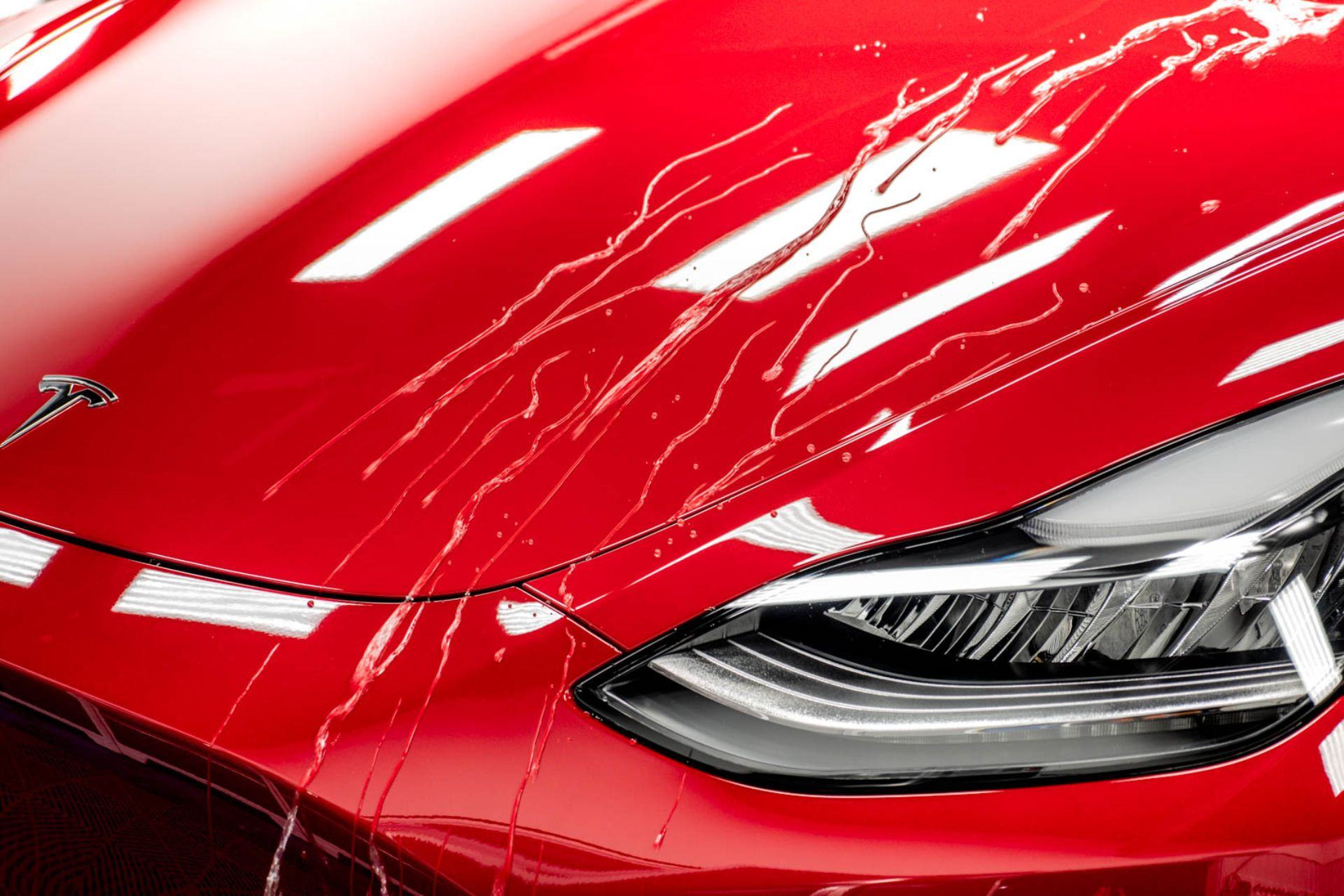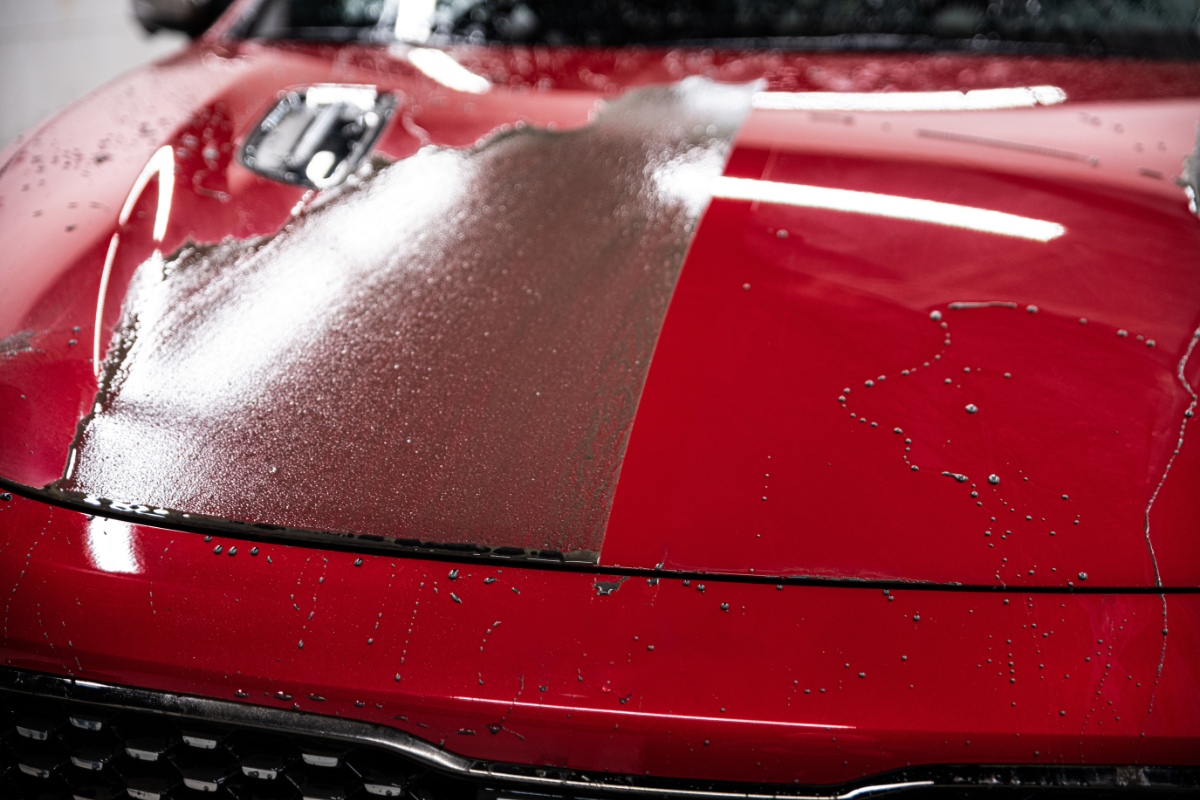A Comprehensive Overview to the Sorts Of Ceramic Layer on the marketplace
Ceramic finishes have actually emerged as a pivotal service throughout different sectors due to their one-of-a-kind residential properties and applications. As we discover the unique features and applications of these coverings, the ramifications for performance and longevity end up being significantly apparent, elevating concerns about which kind might finest fit your requirements.
Understanding Ceramic Coatings
Ceramic finishings are innovative protective remedies that have actually acquired appeal in various markets, especially in auto and aerospace applications. These finishings are composed of a liquid polymer that, when healed, creates a resilient, hydrophobic layer externally of the substrate. This layer gives improved resistance to ecological pollutants, UV radiation, and chemical exposure, consequently extending the life and visual allure of the underlying material.
The basic component of ceramic layers is silica, which adds to their solidity and sturdiness. The application procedure normally includes surface prep work, application of the coating, and treating, which can be achieved with warmth or UV light. When healed, ceramic layers exhibit phenomenal bonding residential properties, permitting them to adhere highly to a range of surfaces, consisting of metals, plastics, and glass.
Along with their protective attributes, ceramic layers also use simplicity of upkeep. Their hydrophobic nature lowers the adherence of dirt and gunk, making cleansing simpler and less frequent. In general, the adoption of ceramic coverings stands for a considerable development in surface security innovation, supplying both functional and visual benefits throughout numerous industries.
Sorts Of Ceramic Coatings
Different kinds of ceramic finishings are readily available, each made to meet certain efficiency requirements and applications - Auto Detailing. One of the most typical types consist of:
Silica-based Coatings: These finishings primarily are composed of silicon dioxide and are known for their durability and chemical resistance. They are commonly made use of in auto and industrial applications.
Titanium Dioxide Coatings: Renowned for their photocatalytic residential or commercial properties, titanium dioxide finishes are usually applied in environments where self-cleaning and antifungal homes are preferable, such as in structure products and automotive surfaces.
Zirconia Coatings: Defined by their high-temperature security and thermal resistance, zirconia finishings are made use of in applications such as turbine engines and high-performance automobile parts.
Alumina Coatings: Displaying exceptional hardness and thermal security, alumina layers are often made use of in wear-resistant applications, including reducing tools and commercial machinery. - scratch repair sarasota
Hybrid Coatings: Combining the buildings of different products, crossbreed finishings use enhanced performance qualities, making them appropriate for distinct and requiring applications.
Each kind of ceramic finish serves distinct objectives, allowing customers to select one of the most appropriate option based on certain environmental problems and performance needs.
Advantages of Ceramic Coatings
Coatings play an essential role in enhancing the performance and durability of surfaces across different sectors. Ceramic layers, particularly, deal countless benefits that make them increasingly preferred among manufacturers and consumers alike. Among the primary benefits is their outstanding toughness. These coverings are immune to scratches, chemicals, and UV rays, making certain that the underlying surface area continues to be safeguarded in time.
Along with resilience, ceramic layers give excellent hydrophobic properties, permitting simple cleansing and upkeep. This water-repellent nature reduces the adherence of click resources dirt, grime, and other contaminants, which can prolong the aesthetic appeal and functionality of the surface. Ceramic finishings can dramatically improve thermal resistance, making them perfect for applications that withstand high temperatures.

Application Process
When applying ceramic finishings, a why not look here careful method is essential to achieve ideal results. A tidy surface area ensures appropriate bond of the coating.
Once the surface is prepped, the following step is to apply the ceramic layer. This can be done using an applicator pad or a microfiber towel, guaranteeing also insurance coverage. It is important to function in tiny areas to preserve control and prevent premature healing. The finish ought to be used in thin layers, as thicker applications can cause uneven surfaces.
After application, the finishing requires a certain treating time, usually ranging from a few hours to a complete day, depending upon the item. During this time around, it is important to prevent exposure to moisture or pollutants. A gentle buffing may be essential after healing to boost the gloss and eliminate any kind of high areas. Following these actions faithfully will take full advantage of the effectiveness and longevity of the ceramic finishing, giving a sturdy safety layer view publisher site for the surface.
Upkeep and Longevity
To make certain the durability and performance of a ceramic covering, normal upkeep is important. Ceramic layers, recognized for their toughness and safety high qualities, need certain care routines to optimize their lifespan and efficiency. The very first step in upkeep includes regular cleaning with pH-neutral soap, staying clear of harsh chemicals that can weaken the layer. It is a good idea to wash the automobile on a regular basis, ideally every 2 weeks, to stop the build-up of contaminants that might jeopardize the layer's integrity.
In addition to regular cleaning, regular examinations are crucial. Look for indicators of wear or damage, such as hydrophobic residential or commercial properties diminishing or surface area flaws. If needed, a light polish might be used to revitalize the finish without removing it away.
In addition, the application of a booster spray can improve the finishing's hydrophobic effects and recover its gloss. This is especially useful for coverings that have actually remained in usage for an extensive period. Eventually, by adhering to these upkeep techniques, one can significantly extend the life of a ceramic coating, making certain that it proceeds to give ideal security against environmental elements and preserve the visual allure of the vehicle.
Conclusion
